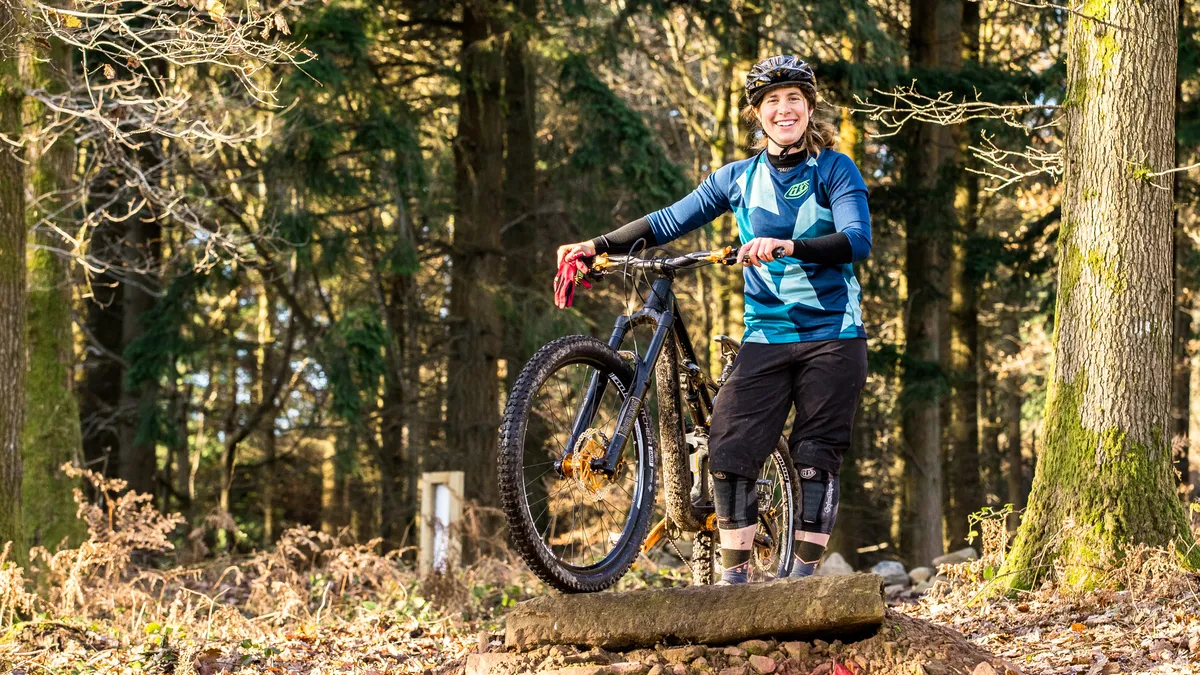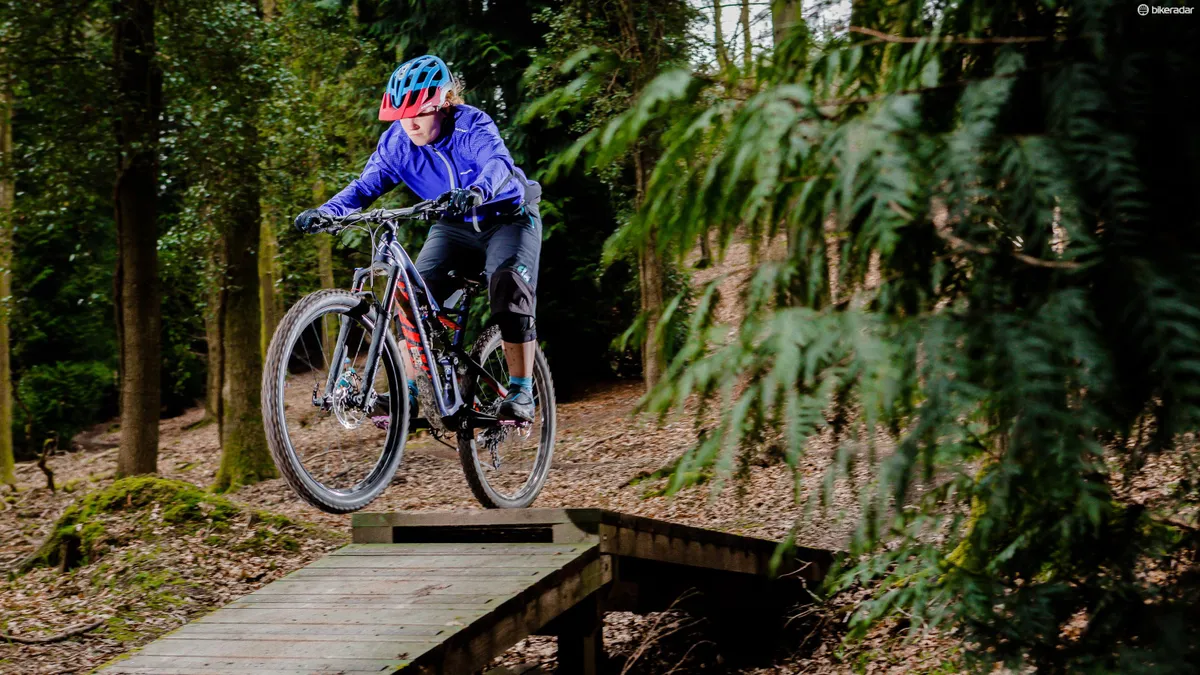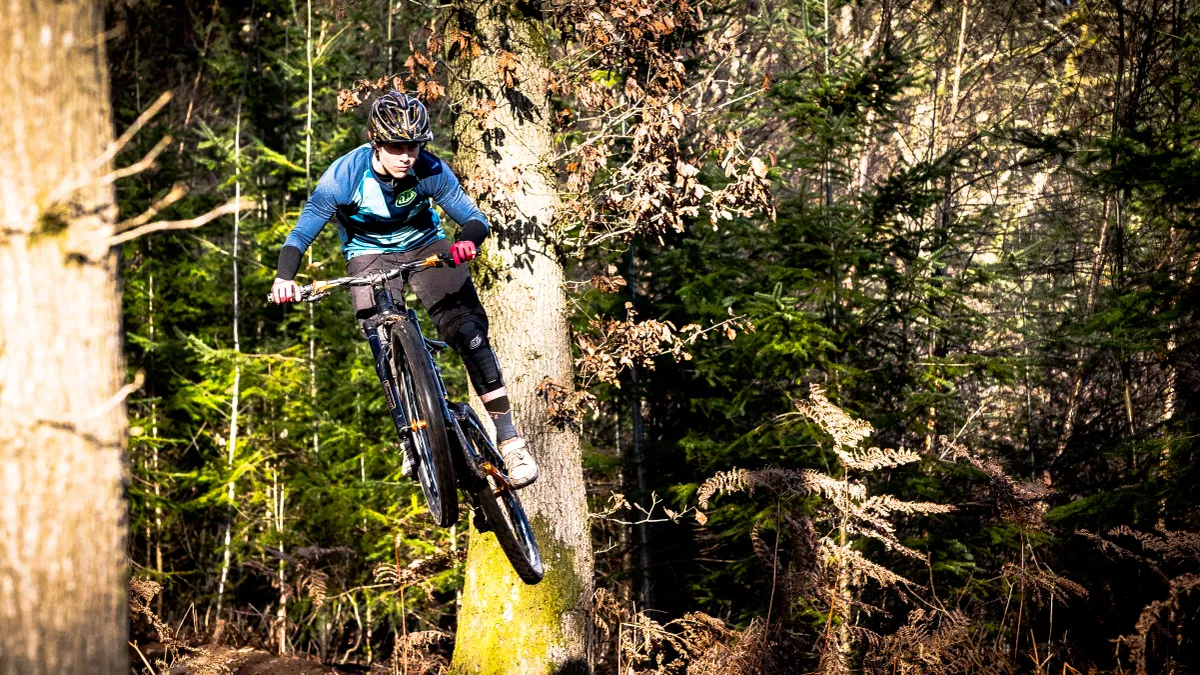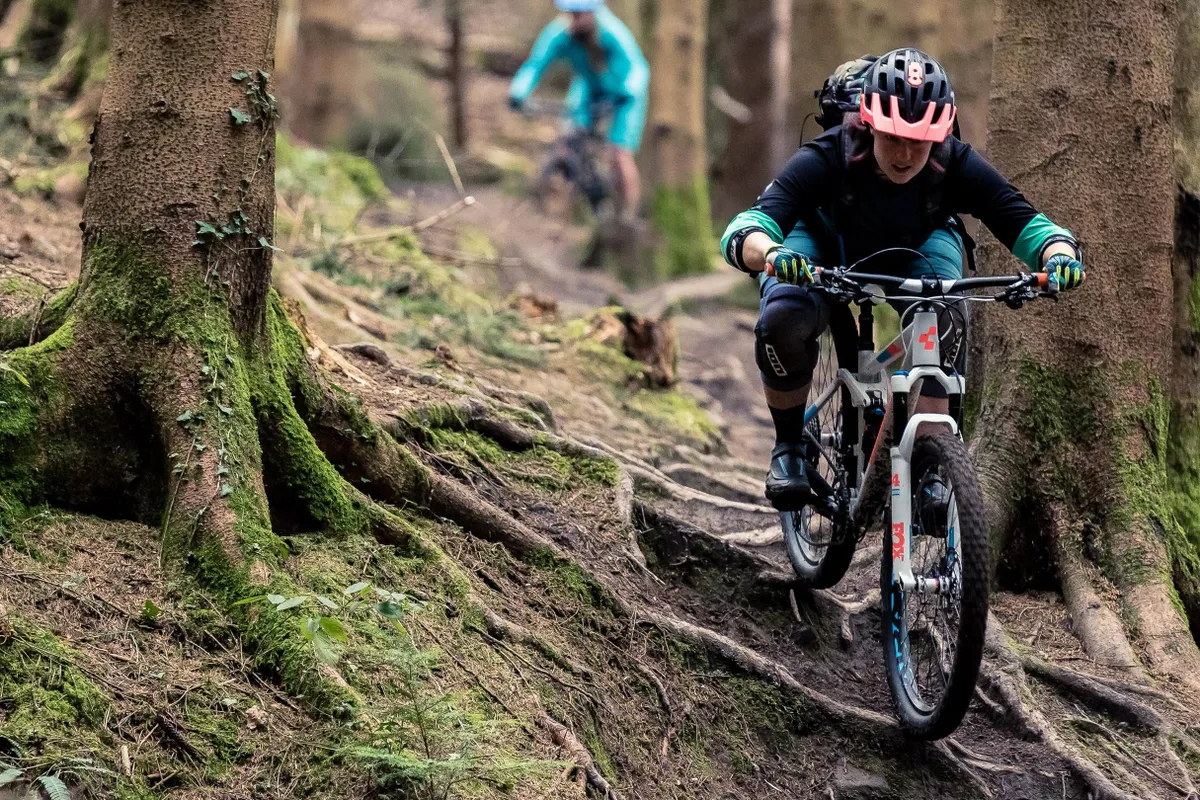We’ve all been there. That one feature that stops us dead in our tracks, the drop we always avoid or the jump that’s become our nemesis, which affects everyone from beginner to pro. Luckily, there are some simple ways to get your head around these challenges and stop the block.
- Tips for staying motivated mountain biking
- 5 ways to make sure everyone knows you're a mountain biker
- Women's cycling reviews, news, interviews and more on Bikeradar Women
World champion 4X racer and elite downhiller Katy Curd knows a thing or two about the mental game required to overcome intimidating trail features and as a qualified coach she’s also expertly placed to help advise others on how to overcome them.

“I think no matter what level of rider you are, everyone is going to have a block with something,” she says. “Riding is one of those things where, while you can be at the top of your game, you can always improve.”
Before they know it, three steps down the line they’ve worked through it
So for anyone who’s found themselves frozen by that one feature and not sure if they’ll ever get past it, Curd has a selection of tried and trusted techniques to turn them from obstacles to something that’s actually fun.
1. Change the way you think about the feature
“It’s all about trying to switch that mental focus around a bit, getting yourself to focus on what you are doing rather than what you don’t want to do” says Curd.
“Instead of thinking about how you can’t do it, think about what you do need to be able to do to get over or through it. This could be your position on the bike, for example, or the line you take coming into it.”
2. Focus on the technique rather than the feature

Leading on from tip 1, one particular element that can really help is working on the technique or skills you’ll need to get through it, rather than just thinking about the feature.
“You usually find, especially when you’re coaching, that if you tell someone to think about one particular thing they start to focus on how they feel physically and their technique, rather than focussing on the thing they are scared of.”
Foot position is a good example as it’s something relatively simple that can make such a big difference when you’re riding through rock sections, over drops and jumping. When you’re focussed on getting your foot position right, you aren’t quite so focussed on the feature.
“Before they know it, three steps down the line they’ve worked through it,” says Curd with a smile.
3. Work out what's scary
If someone were to ask you what you were scared of, would you answer 'the feature' or say something specific about the feature?
“Try and figure out what exactly it is about that feature that troubles you,” Curd advises. Is it coming off the pedals or sliding out, coming down nose-heavy off a jump or crashing in general.
"If it’s skills-based, such as having the right foot position or when to brake coming into features, then those are things you can practice elsewhere on smaller, similar features until you feel confident in your skills."
And if you’re scared of crashing?
“I know this sounds weird,” laughs Curd, “but try and work out what kind of crash you are worried about. If it’s going into a tree or over the bars, you can adjust your line or position to make sure that doesn’t happen."
4. Build up your confidence

Confidence is the big one. Having faith in yourself and your abilities is what will ultimately get you over that feature and flying down the trail.
Curd says this is all about feeling good BEFORE pushing the barrier.
“No matter the size or type of feature, it’s important to build up confidence by knowing you have the right technique before hitting something. The best way to do this is by building up through smaller versions of the feature you want to hit, whether that’s a root section, drops, jumps, whatever!”
The more you practice, the more evidence you have that you can succeed, and the more natural the movements will feel as you work your way through bigger or trickier features.
I used to find that if I was at a World Cup and there was a feature I was slightly scared of, I would beat myself up about it over and over again
5. The rule of 3
“This is something I’ve used a lot myself,” Curd says, and it’s not some mystical talisman or pre-ride ritual.
“I used to find that if I was at a World Cup and there was a feature I was slightly scared of, I would beat myself up about it over and over again. So I made this rule of three up: if I didn’t do it by the third go, I’d walk away and not think about it, and maybe come back to it later or the next day. Otherwise, I’d get too tense and wound up about it and couldn’t focus on the rest of the track.”

Does this sound familiar? It’s easy to be hard on yourself for not doing something, but this can then affect the rest of your riding and your general mood.
If you’re not feeling it after three goes, try something else. You may well find that when you come back to it next time, you sail right through it!
6. The reverse rule of 3
Once you’ve finally conquered that feature, consolidating and reinforcing that success is as important as achieving it in the first place. You want to arm yourself with evidence and experience so that the next time you come across a similar feature you’ll know you can do it, rather than thinking it was a fluke or one off.
“If you’ve got a mental block with something and just do it once, you may come back to it and find the fear has built back up,” Curd adds. “But if you do it three times in a row and do it well, it builds up your confidence, so even if something does go a little wrong you know you can manage it okay.
“And usually after the third time, it feels really good!”
7. Get some feedback

If you ride with friends, then they can also help you get through it — provided they are the kind of friends who are supportive and helpful!
“Sometimes, you can get stuck in a world of ‘I don’t know whether I can do this!’ or ‘I can’t do that!’, but if you’ve got someone there watching you saying ‘well, what really is the difference between this and that’ it can show you a different perspective on the feature.”
If it’s someone you trust, as well as providing encouragement they can also give you feedback on your body position and technique. It’s hard to know what you’re actually doing when you ride your bike. Having an objective observer can help you work out what you’re doing right, wrong, and how to improve.
Another way of doing this is to record yourself riding using an action camera or phone camera, but, of course, expert personalised feedback is also the stock-in-trade of a good coach. So if you find something just keeps beating you, a coaching session may well help you beat the block.

